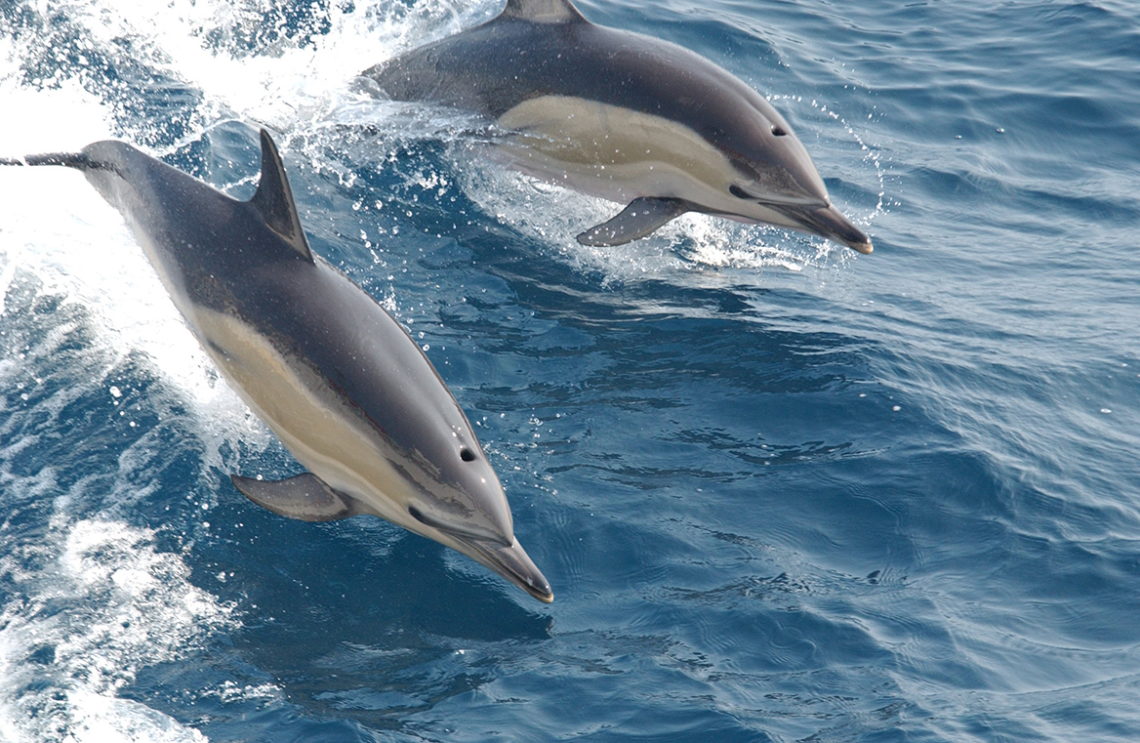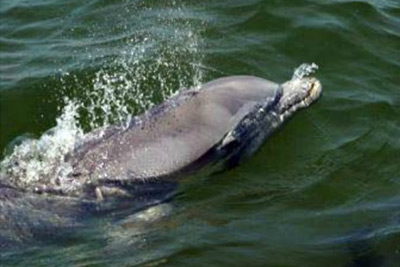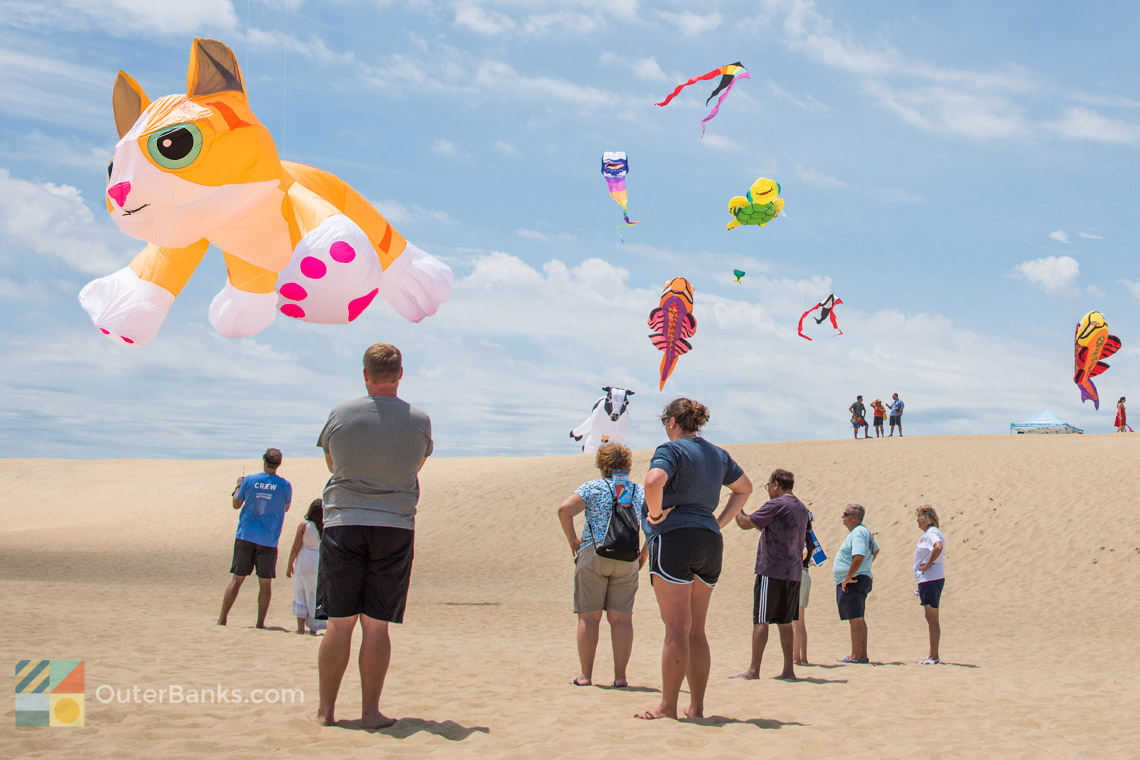Special thanks to the Outer Banks Center for Dolphin Research and Nags Head Dolphin Tours for supporting this content. The Outer Banks Center for Dolphin Research is a non-profit organization engaged in a long-term photo-identification study of bottlenose dolphins in the northern Outer Banks of North Carolina. Nags Head Dolphin Watch provides sightseeing boat tours that get visitors close to Outer Banks dolphins. Call them at (252) 449-8999.
Like an unexpected gift, the sighting of dolphins along the Outer Banks delights and amuses many summer visitors. Many people view these chance encounters as a treasured highlight to a relaxing vacation and will happily spend hours observing the dolphins' antics. What few people realize is that they are likely viewing the same group of dolphins, day after day and summer after summer. Some bottlenose dolphins will spend their summers in the waters of the Outer Banks and then migrate south for the winter only to return again in the early summer the next year. This early migration has led some people to call them the "Retirees of the Sea."
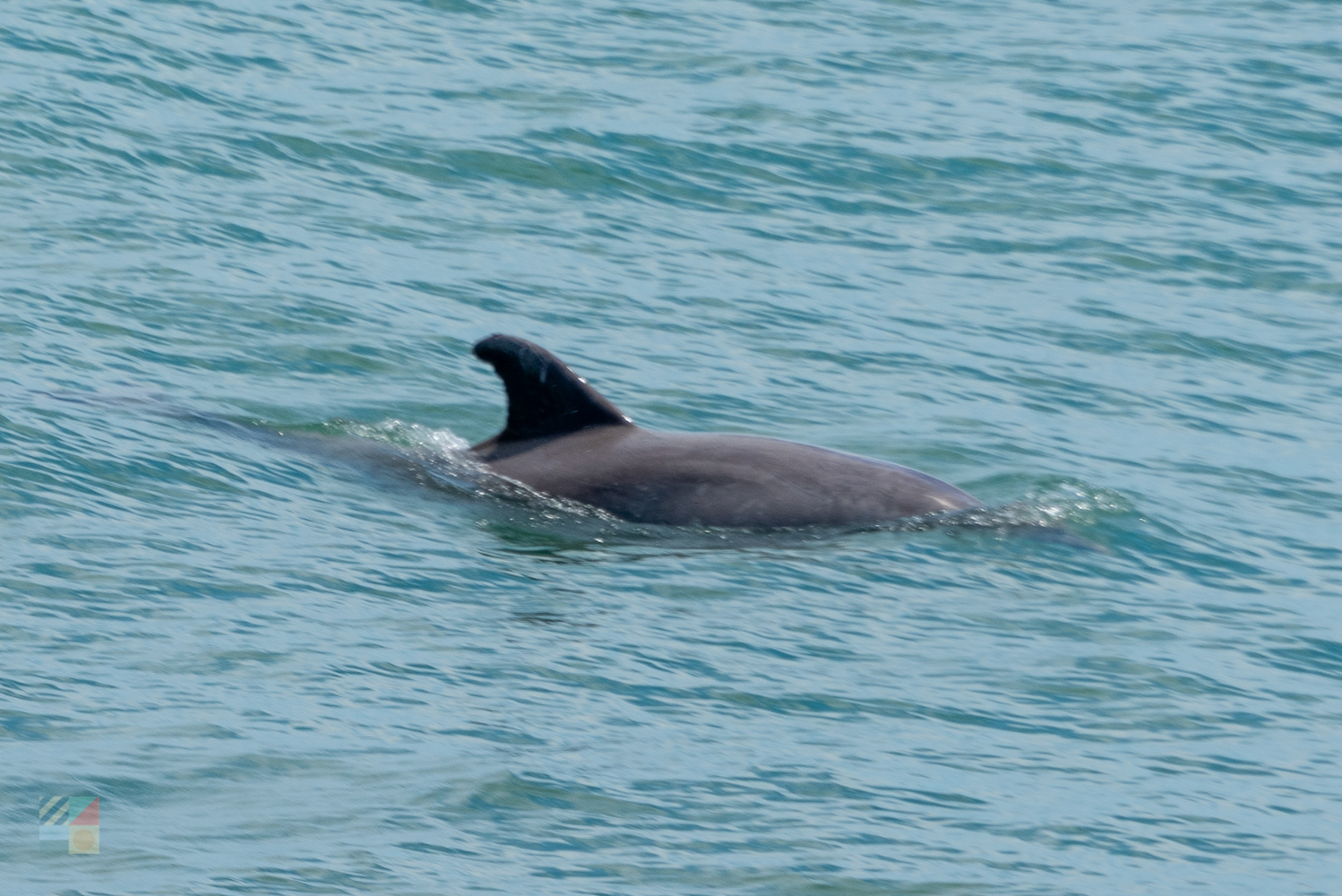
Besides viewing the dolphins at a distance from the beach you might have a chance encounter with a dolphin while kayaking or sailing. The most certain way to get "up close and personal" with a dolphin is to take a ride on one of the popular Dolphin Watch boat trips. While no guarantees can be offered on these trips, they usually have a better than 90% chance of encountering dolphins.
One benefit of a Dolphin Watch trip is to be able to get really close to the dolphins, since they usually swim right near the boat. If you look closely you might even be able to see that the dolphins' fins (which appear smooth at a distance) are actually covered with nicks and scratches. It is these marks that dolphin researchers have used to identify over 300 dolphins in the Outer Banks. The most famous of these is Onion, perhaps the easiest dolphin to identify on the entire East Coast. Onion and his family spend their summers in the Nags Head area, and their winters off of Beaufort, N.C.
Dolphins were first documented to inhabit our sound and ocean waters by the original English explorers, prior to the founding of the Lost Colony. These explorers found that native tribes were well acquainted with the dolphins and even hunted them for food. Since Onion's group is known to have inhabited these waters for well over a decade, it is even possible that his ancestors have been living in these waters for several centuries. They might even be our oldest Local Family.
But are they dolphins or porpoises? Many people believe that the two terms are interchangeable, when in fact they are vastly different species. The main way to distinguish between them is simple: porpoises have a blunt, whale-like head while dolphins do not.
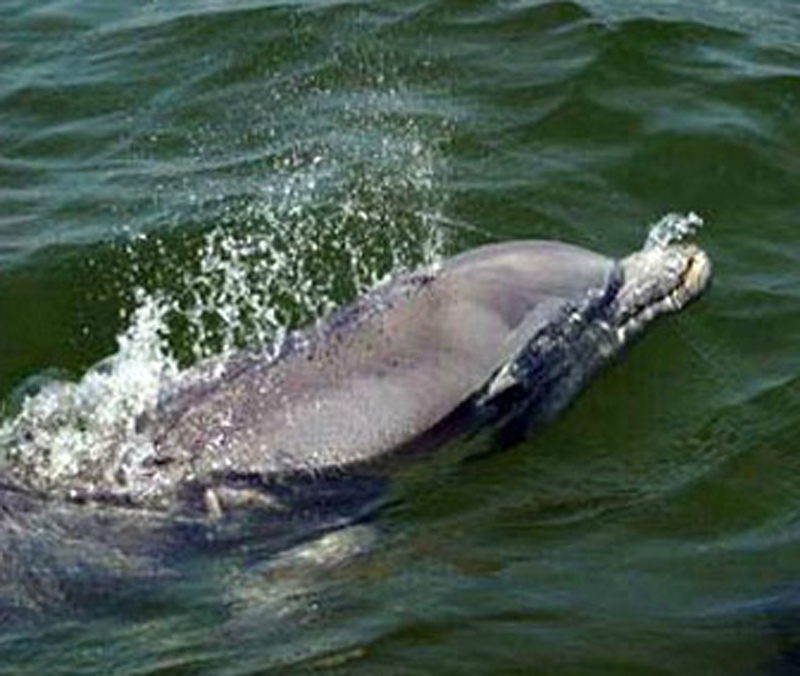
Dolphins perceive the world in ways that are well beyond the scope of our own senses. Whereas we rely mainly on sight and hearing and retain the senses of touch, taste and smell, they have had to adapt in different ways to suit their aquatic environment. While sight, touch and taste are important, their primary source of information is hearing-which they have developed to an extraordinary degree. Sound travels through the water nearly 5 times faster than through air and can be heard over much longer distances below the surface. They have highly developed hearing abilities, and a large portion of their brains are devoted to the analysis of sounds.
The coastal bottlenose dolphins that frequent our sound and ocean waters return to Oregon Inlet, Roanoke, and Croatan sounds every year as soon as the waters warm and the fish they feed on are in abundance. Dolphins are social animals, and they spend their entire lives in the company of other dolphins. The pods of 3 or 4 (and up to 40) dolphins will range in age from newborns to fifty years old, and physically mature adults range in size from just under 6 feet to nearly 12 feet, and weigh from 330 lbs. to 1430 lbs. The bottlenose dolphin shows a more striking range in size between individuals than any dolphin species.
Living together in the protective sound waters improves their chances of finding and catching food, increases the likelihood of spotting and avoiding predators such as sharks, makes it easier to encounter a suitable mate, provides a source of willing and available babysitters to look after the calves, and increases the learning potential of youngsters. Often these pods will band together to succeed in foraging for food, encircling groups of tiny fish and corralling them against the surface of the water which acts as an impenetrable barrier (the fish can often be seen jumping frantically into the air in a desperate bid to escape) and taking turns diving into the tightly packed shoal to feed on the fish. In some cases, the dolphins may stun the fish with exceptionally powerful echolocation clicks with their tail flukes.
A close encounter with a dolphin in the wild is a thrilling and memorable experience. Who could remain untouched by the amazing agility of a bottlenose dolphin as it leaps into the air beside a boat, or as it exhales a breath of air causing a cloud of spray to shoot 10 feet into the air before disappearing under the surface again, or a young calf breathing out of the water in stride with its mother, never missing a beat? These are the kinds of experiences that stay with people for the rest of their lives.
Special thanks to the Outer Banks Center for Dolphin Research and Nags Head Dolphin Tours for supporting this content. The Outer Banks Center for Dolphin Research is a non-profit organization engaged in a long-term photo-identification study of bottlenose dolphins in the northern Outer Banks of North Carolina. Nags Head Dolphin Watch provides sightseeing boat tours that get visitors close to Outer Banks dolphins. Call them at (252) 449-8999.
-
OBX Wedding Fest
January 16th, 2026 - January 18th, 2026 -
Hatteras Island Oyster Roast
February 7th, 2026 1:00 PM - 4:00 PM -
First Friday in Manteo
March 6th, 2026 6:00 PM - 8:00 PM
You haven’t experienced North Carolina until you’ve experienced North Carolina BBQ, and Pigman’s Bar-B-Que offers excellent North Carolina BBQ meals served with southern hospitality. Pigman’s offers traditional eastern...
It's easy to see why vacationers fall in love with Carova. Located almost literally off the Outer Banks map, while other towns along the barrier islands of North Carolina grew and developed over the decades and became popular East Coast tourism...
OBX Ghost tours is something your family will be talking about the rest of the summer! You'll be entertained as a guide leads you through down town Manteo by lantern telling the spooky stories that makes The Outer Banks one of the most haunted...

